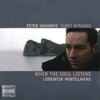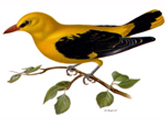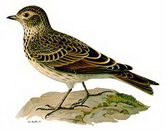Preface
Lodewijk Mortelmans studied at the Flemish Music School of Antwerp, where he took piano lessons from Aloïs Bossaers , organ lessons from Joseph Callaerts and followed counterpoint, fugue and composition classes with Joseph Tilborghs, Jan Blockx as well as Peter Benoit. Meanwhile he played as a percussionist in the orchestras of the Société royale d’Harmonie and of the Théâtre français. He also studied at the Conservatoire Royal of Brussels for one year in order to acquire further skills in piano with Arthur De Greef and in counterpoint with Hubert Ferdinand Kufferath. In 1893 he won the Prize of Rome with the cantata Lady Macbeth, a victory which was important in Benoit’s struggle to have his music school proclaimed as royal conservatory.
With the grant connected to the Rome prize Mortelmans undertook study trips to the Netherlands, Germany (where he attended the Ring in Munich conducted by Hermann Levi) and to Italy. From 1903 to the outbreak of the First World War Mortelmans was conductor in Antwerp of the orchestra of the Maatschappij der Nieuwe Concerten (Society of New Concerts). This prestigious concert society attracted many great international soloists to Antwerp, so that Mortelmans in 1909 for example was able to conduct Jacques Thibaud and Pablo Casals in Johannes Brahms’ Double Concerto.
In his rather conservative programming Mortelmans particularly favoured the German romantics: van Beethoven, Brahms, Schumann and Wagner. Besides his own appearances with the orchestra he was also expected to prepare the orchestra for prominent guest conductors such as Richard Strauss, Gustav Mahler and Felix Weingartner.
In 1902 Mortelmans became a teacher of counterpoint and fugue at the Royal Flemish Conservatory of Antwerp and in 1924 he became its director.
Mortelmans went down in history as the Flemish lied composer par excellence. His colleague Paul Gilson called him the « Prince of the Flemish lied ». Not so much for the quantity of his lied œuvre - some eighty songs in total - as for the internalised power and the deep, personal expression that characterises it. He mainly looked for his texts to the priest-poet Guido Gezelle. After Mortelmans in 1921 had made a tour through the United States, several of his Gezelle songs were published in New York.
It is striking that the piano accompaniment of various lieder might virtually survive as an independent piano work, i.e. without vocal part. So evidently he also composed quite a lot of piano music and some of his piano pieces even sound like paraphrases of his lieder. Mortelmans’ piano music is chamber music in the literal sense of the word: destined for the sitting room. They are intimate miniatures, conceived very pianistically, in which the virtuosity always remains in the background. Mortelmans also composed the opera Kinderen der Zee (Children of the Sea) and a number of interesting choral works.
It was especially at the beginning of his career that Mortelmans was noted as an orchestral composer with symphonic poems such as Mei (May), Helios, Mythe der Lente or Lente-idylle (Spring Myth or Spring Idyll) and the Homeric Symphony. After 1900 he was mainly concerned with orchestrating existing works. Later orchestral works include the Elegies and the symphonic poem Morgenstemming (Morning Atmosphere) from 1922. In this evocative work, on the crossroads of high romanticism and impressionism, the refined harmonisation and orchestration may above all be noticed, along with the extensive thematic material.
On 31 January 1923 Mortelmans himself conducted the creation of Morgenstemming at a concert of the Royal Zoological Society of Antwerp which was completely devoted to his work. As a comment the programme brochure mentioned: « This piece is the lyrical outpouring of one who loves nature and from its pure source draws joy of living and enthusiasm ... but it also inspires a fervent, silent prayer to the Almighty, the Creator of the beautiful. »
Mortelmans’ music is never exuberant, it isn’t profusely extravert, it isn’t meant to astound. The power of his music lies in its restrained, intimate, introspective character, its métier and its classical structural control.
Jan Dewilde, 2005 (Translation: Jo Sneppe)
For performance material please contact the publisher Crescendo, Antwerpen. Reprint of a copy from the Studiecentrum voor Vlaamse Muziek. The study score is printed with the support of Studiecentrum voor Vlaamse Muziek (www.svm.be).


 Het Wielewaalt en Leeuwerkt -
Het Wielewaalt en Leeuwerkt -  One of his most important piano works, written in 1921.
One of his most important piano works, written in 1921. 




